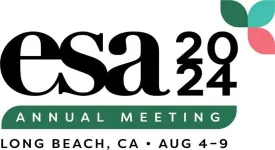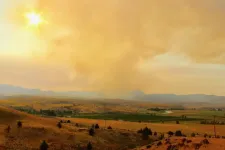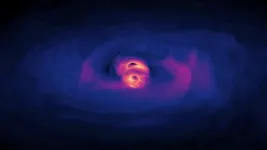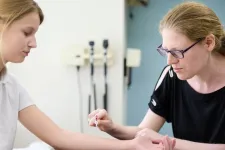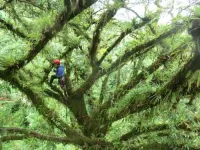(Press-News.org) One-third of diabetic adults in the U.S. do not receive annual eye exams. Additionally, lack of pupillary dilation before exams is associated with ungradable, or insufficient exams. In September 2022, the OhioHealth Grant Medical Center Family Medicine practice implemented on-site diabetic retinopathy screening using digital fundus photography and automated retinal imaging without dilation. The practice later introduced eye dilation for specific patients.
By identifying patients needing screening before appointments and using electronic health record reminders, the clinic increased the rate of interpretable exams from 20% in November 2022 to 35% in May 2023. That same month, the clinic began offering eye dilation to patients over 64 years of age and those who failed non-dilated exams. This change reduced the insufficient exam rate from 36% to 22% over the following eight months. The clinic’s retinopathy detection rate increased from 11% to 18% between September 2022 and January 2024. By January 2024, the screening rate was 57% for patients not seen in a year and 65% for those seen within the year.
The greatest increase in retinopathy screening came after clinic managers started tracking patients who needed screening prior to their appointments, and reminding staff through the electronic health record to perform screening. Offering dilated eye exams further reduced the rate of insufficient exams. Overall, the strategy of using in-clinic retinal photographs with software interpretation and selective eye dilation effectively increased screening rates for our patients from socially disadvantaged populations.
Dilation Before Automated Diabetic Retinopathy Screening Performed in the Primary Care Setting
Jonathan Yun, MD, MPH, et al
OhioHealth Grant Family Medicine, Columbus, Ohio
PRE-EMBARGO LINK (Link expires at 5 p.m. July 22nd, 2024)
PERMANENT LINK
END
Implementing diabetic retinopathy screening using in-clinic retinal photographs and automated software analysis increases screening rates for diabetic retinopathy among low-income minority patients
2024-07-22
ELSE PRESS RELEASES FROM THIS DATE:
Structural racism and inconsistent hospital policies result in health care professionals disproportionately testing black newborns for prenatal drug exposure
2024-07-22
Background and Goal: Black birthing parents and their newborns disproportionately experience newborn drug testing for prenatal substance exposure by health care professionals. This practice contributes to Child Protective Services reporting, family separation, and termination of parental rights. This qualitative study, conducted at the University of Michigan in Ann Arbor, MI, explored knowledge, attitudes, and experiences of health care professionals and Child Protective Services professionals regarding the influence of structural ...
Study examines the impact of social connections and professional networks of NAPCRG members in driving scientific success
2024-07-22
Background and Goal: This study marks the 50th anniversary of the North American Primary Care Research Group (NAPCRG)—the premiere primary care research organization, particularly in family medicine—by examining social connections among members.
Study Approach: Researchers used social network analysis to characterize individual members and the relational structure among NAPCRG community members.
The study invited 5,905 current and past NAPCRG members and participants. The survey, based on the validated Program to Analyze, Record, and Track Networks to Enhance Relationships ...
Media Tip Sheet: Fire Ecology at ESA2024
2024-07-22
Experts in fire ecology will converge at the Ecological Society of America’s upcoming Annual Meeting in Long Beach, Calif., Aug. 4–9, presenting the latest research on the causes and consequences of wildland fire in dozens of talks and posters.
The growing threat of wildfire makes understanding the past, present and future of fire regimes essential. Fire ecology addresses crucial questions such as how different species and ecosystems respond to burns, which habitats are most vulnerable and how forests recover—or fail to recover—after ...
Researchers enhance tool to better predict where and when wildfires will occur
2024-07-22
CORVALLIS, Ore. – A newly enhanced database is expected to help wildfire managers and scientists better predict where and when wildfires may occur by incorporating hundreds of additional factors that impact the ignition and spread of fire.
“There is a tremendous amount of interest in what enables wildfire ignitions and what can be done to prevent them,” said Erica Fleishman, an Oregon State University professor. “This database increases the ability to access relevant information and contribute to wildfire ...
A new drug target identified for diseases associated with leukemia-causing virus
2024-07-22
HERSHEY, Pa. — A team of researchers from Penn State College of Medicine found a new target for treating diseases associated with human T-cell leukemia virus type 1 (HTLV-1). They determined that blocking a class of enzymes called kinases, which regulates cellular functions, leads to cell death caused by the degradation of Tax, a protein essential for viral gene expression, viral transmission and survival of cells infected by HTLV-1. The team published the findings in Nature Communications.
HTLV-1 is a retrovirus — a type of virus that hijacks a cell by inserting ...
Astrophysicists uncover supermassive blackhole/dark matter connection in solving the ‘final parsec problem’
2024-07-22
Researchers have found a link between some of the largest and smallest objects in the cosmos: supermassive black holes and dark matter particles.
Their new calculations reveal that pairs of supermassive black holes (SMBHs) can merge into a single larger black hole because of previously overlooked behaviour of dark matter particles, proposing a solution to the longstanding “final parsec problem” in astronomy.
The research is described in Self-interacting dark matter solves the final parsec problem of supermassive black hole mergers published this month in the journal Physical Review Letters.
In ...
Can we predict who will develop migraine headaches?
2024-07-22
A migraine is not just a bad headache. It is a much-dreaded part of a neurologic disorder that has an array of possible symptoms, including pulsating cranial pain, waves of queasiness, bouts of vomiting, and hypersensitivity to light and sound. They frequently materialize unannounced and at the most inopportune of moments.
Pubescent girls with a family history of migraine headaches are especially vulnerable — yet there remain many unknowns regarding the who, when and why of the disorder. Hadas Nahman-Averbuch, PhD, a scientist at Washington University School of Medicine in St. Louis with expertise ...
On the origin of academic traditions — and some alternatives for debate
2024-07-22
(Santa Barbara, Calif.) — The field of science aims to be objective, repeatable and justified in its choices and methods. These principles are what distinguish accepted scientific findings from pseudo-science. Yet the experience of learning and working in the field of science, including graduate school activities and scientific conferences, might not always follow the same principles. These practices and gatherings of scientists may be just as organic and random as evolution.
Have the traditions of science — rituals of poster presentations and tenure positions — evolved by chance? ...
Tropical plant species are as threatened by climate change as widely feared, study confirms
2024-07-22
PROVIDENCE, R.I. [Brown University] — Brown University biologists who set out to better understand the effects of climate change on plant species in tropical mountain regions found that even small variations in temperature and moisture can have massive impacts, threatening not only plants that live there, but also the ecosystems they support.
Emily Hollenbeck, who conducted the research while earning her Ph.D. in ecology and evolutionary biology from Brown, made the discoveries through a series of laborious yet informative experiments conducted in the Monteverde mountain ...
SNIS 2024: New study shows updated stroke evaluation protocols increase patient access to lifesaving stroke treatment
2024-07-22
COLORADO SPRINGS, Colo. — Changing standard procedures for evaluating and treating patients with suspected stroke has led to improved access to lifesaving stroke surgery across the state of Delaware and should inform triage and treatment nationwide, according to research released today at the Society of NeuroInterventional Surgery’s (SNIS) 21st Annual Meeting.
In “Direct From the Field Bypass to CSC Improves Timeliness and Likelihood of Thrombectomy for Patients with Emergent Large Vessel Occlusion,” the members of the Delaware Stroke System worked with the state’s emergency medical services (EMS) director ...

